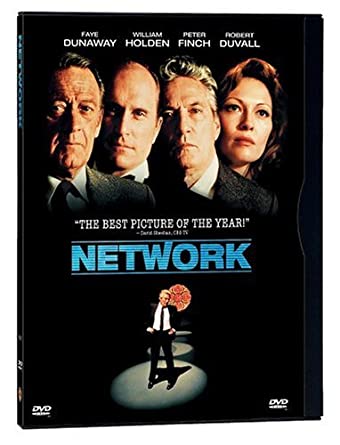If you’re reading this, it’s likely you are interested in having a book published or know someone who is—or, you are at least curious about the process. Maybe you’ve done some research on “self” publishing, but it all seems a bit confusing.
Not to worry. By the time you’re finished reading this, you should have a much better understanding as to the process of becoming a published author.
Indeed, that process is far different today than it was just a few years ago. Many of the changes are largely due to ever-evolving technology, as every step in the “author to reader” experience has changed due to those advancements.
Authors of fiction and non-fiction alike have far greater access to information, as well as tools to help in writing process. Spelling and grammar-check programs are common for example, as is voice-to-type/dictation software, and the steady growth and sophistication of the internet and search algorithms make research easy. Together, these changes help free the author of some of the labor and mundane aspects traditionally involved in the creative process of “writing” a book.

How printed books are manufactured today is far different than it was in years past, as advancements in this aspect of the publishing process continues at an ever-increasing pace. Print-on-demand (POD) technology allows one-off, single-book printing to be accomplished at very-low cost, within minutes of an order. This means authors and publishers no longer need order large quantities of books in order to keep unit costs low.
Alongside POD, the process in printing bulk-volume orders has also progressed. Our company, ALIVE Book Publishing, recently placed an order for one of our authors for 5,000 copies of his book. Within five days of the order, all 5,000 copies of his book were en route—printed, bound, boxed, and shipped. Just a few years ago, the printing process alone in this case would have required several weeks at least.
The advent of e-books is of course another change. An e-book is simply a device-friendly PDF (Portable Document File) version that one can read on a mobile device or computer. While not appropriate for all books (better than 80% of book-buyers still prefer the tactile experience of printed books), e-books are an attractive alternative for some books, like the “quick read” while you’re at the beach on your vacation.
Then, there is marketing and distribution. The gorilla in the room here of course, is Amazon. This behemoth is doing its best to dominate the entire book universe. Currently, they list about 33 million books for sale. While responsible for the demise of countless small, independent booksellers—a shame, however you look at it—they are not the “be all end all” in books and publishing for many reasons.
In terms of marketing for example, someone must know about your book before they search for it online. And here, nothing beats good old-fashioned advertising. After all, you came to this article by way of ALIVE’s cover, or the ad on the back cover, am I right? Traditional advertising methods and human-driven public relations are critical elements in the sales process that Amazon does not and cannot provide. At ALIVE Book Publishing, we have re-published several titles for authors who at first tried Amazon’s in-house publishing service. Did you know that most independent, local booksellers won’t list or sell books created through Amazon’s publishing service? Those authors didn’t either.
The fact is, while Amazon is terrific at warehousing and order fulfillment, when it comes to the more specialized aspects of book publishing, marketing, and sales, their automation-algorithm model is no match for the human touch.
New vs Old World of Publishing
“I have a manuscript but would NEVER pay to have my book published.” Those were the words of a young author in response to my mentioning to him that in addition to publishing this magazine, ALIVE publishes books too, but in most cases the author pays the front-end cost to have their work published.

While we sometimes hear the sentiment expressed by this young author, it is a throwback from a bygone era when a handful of large publishing houses served as gatekeepers of the industry. Today, largely due to those technological advancements I mentioned before, this is no longer the case, as independent publishing houses like ALIVE now compete, toe to toe, with better-known publishers like Random House.
In fact, had that author chosen to submit his manuscript to us at ALIVE Books, assuming we approved his work, in as little as 60-90 days his book would have been in front of the same book buyers throughout the world as the current best-selling authors’.
The Three Paths of Book Publishing
There are three ways to have one’s book published: traditional, subsidy, and self-publishing. All have advantages and disadvantages, and the path one takes largely depends upon the reason(s) for wanting to see one’s book in print. Some authors simply want to see their work bound in a book format with the intention of sharing it with family and friends; some have a desire to share their story or communicate an idea, and some have commercial success in mind, even if as only a “side benefit” of reason number two.
Path #1: Traditional Publishing
In the past, the traditional route was considered the only path. This is where an author begins the process by sending query letters—essentially a “sales pitch,” intended to capture the attention of a literary agent or publisher. The query letter includes a description of the work and the intended audience for it, along with some information about the author (a bio). In this case, if the author’s pitch is compelling, they may be afforded an opportunity to have a publisher review the author’s manuscript, and if it is “good enough,” the publishing house may agree to publish the author’s work. If one hopes to have their work considered by publishing houses like Random House or Harper Collins, it is essential that the author be represented by an experienced agent.
Unfortunately for most, this path is a long, unfulfilling process. Few authors “make the cut,” as most agents and large publishing companies are so inundated with queries that they reject all submissions they are unable to classify with 100% certainty as “marketable.”

The most likely candidates to have their work represented by established agents and considered by “Madison Avenue” publishing houses are celebrities and personalities with well-recognized names (the Clintons, Trumps, Kaepernicks, and Kardashians) or authors who have already demonstrated—through previous subsidy or self-publishing success—that their work sells. Publishing is, first and foremost, a business and the days of “speculating” on unknown authors are long gone. The onlyrelevant question publishers ask about an author’s manuscript is: “How many books will sell upon release?”
For example, prior to January 2009, ALIVE Magazine’s fitness columnist was Lorrie Sullenberger, the wife of the now famous pilot, Sully. Prior to his successful landing in the Hudson River, had Sully approached the major publishing houses with a query letter about his experiences as an airline pilot, it’s likely he would have received the typical response—a rejection letter.
However, after a flock of geese collided with his plane and his subsequent artful skill in landing that plane, Sully became an instant celebrity—and a marketable commodity. The result? He was offered a two-book deal by a major publishing house, and eventually a motion picture was produced about the “Miracle on the Hudson.”
While traditional publishing provides advantages—namely brand recognition and the ability to have books placed onto the shelves of major book retailers, the profit margin for authors on each book sold can be miniscule. Publishers are betting on mega-sales—preferably millions of books—so they are looking for authors that fall into just a few, select categories. First, they look for “proven” authors; ones who can re-produce work that will be eagerly snatched-up by fans (the Grishams, Kings, Steels, Pattersons and Rowlings). Next, they are happy to publish the works of someone well known and currently popular; actors, sports stars and politicians for example; or anyone making news, like Sully, right after his remarkable landing.
In all these cases, if all goes as hoped, an author might earn thousands or even hundreds of thousands of dollars. And the publishing houses, of course, enjoy significant returns in all these scenarios too.
But what if you are chosen by a major publishing house and your book doesn’t sell in the thousands? In that case there are challenges associated with traditional publishing. First off, major publishing houses will remove a book from circulation—designate it as “out of print”—if it fails to sell in significant quantities. Worse still, if a book fails to meet the publisher’s sales expectations, they will often demand that any “advances” paid to an author be returned. Ouch!
Unless one has already sold thousands of copies of his work, or has the last name Kardashian or Clinton, authors like the young man mentioned previously will likely never see their book published. The only reasonable—and wisest—route open to this young author is self or subsidy publishing.
Path #2: Self Publishing
It is possible to self-publish your book. The main advantage to self-publishing is that you control 100% of the process. The main disadvantage is… you control 100% of the process!
You will earn the highest margin of profit this way, but that is because you will be doing all the work yourself. The steps involved are numerous, and if your plan is to produce a quality product (your book) that sells well and sells enough copies to be commercially successful, you need a very large tool-box of skill sets.
Self-publishing means that you will not only write your book, you’ll need to edit it, design and create the cover, design and format the interior pages, obtain the necessary ISBN and bar code, file your copyright, and obtain your Library of Congress Control Number. And then you’ll need to know where and how to have your book printed.
Then assuming you want to sell your book with a hope of making money, you’ll need to market it. And even though your profit per book can be higher by doing all the work yourself, you still need to sell a lot of books to make very much. To do that, you’ll need to know how to make your book available through large online resellers like Amazon and Barnes and Noble, and to thousands of ancillary online wholesalers and retailers. Will you know how and where to make your book available to independent bookstores and libraries throughout the country and worldwide? Will you know how to re-format your book as an e-book and make it available that way in the marketplace, or if it even makes sense to do that? Will you be able to create your own website, promotional materials, and press releases? In short, do you already have the knowledge, technical and artistic skills, connections and resources to truly “publish” and market your book?
Self-publishing is an option if you’ve written a book. . . and then again so is building your own car if you want to travel. . . but sometimes just being the driver—or author—is a more logical choice.
Path #3: Subsidy Publishing
The final path of publishing is subsidy publishing. Years ago this was considered a second rate method, supposedly used only by desperate authors whose work was not “good enough” or had been rejected by traditional publishers. It was implied that authors who chose this route were having their work published merely for the sake of “bragging rights,” as in, “Hello, my name is Joe Smith, and I am an author.”
The fact is, however, many highly successful writers got their start this way, and in light of the realities of traditional and self-publishing, this is the most logical, effective, and affordable way for any author to have their work published.
To be sure, there are a plethora of subsidy publishing companies to be found online, most of which offering a menu of various services designed to get your book published. Most have low cost options to start, but just like in self-publishing, the more they do for you, the more it costs.
One of the major disadvantages of online subsidy publishing companies is their absence of personalized service. Looking at it from their perspective, because they function and compete solely in the very crowded online universe, they have designed their services with that in mind, so they often limit authors to “A, B or C” cover template options for example, or “Gold, Silver and Platinum” packages, each with narrowly defined options. And in most cases, these services are automated, whereby the author’s work is pushed into a pre-existing format—otherwise known as a “cookie cutter process.”
Another important consideration with online subsidy or self-publishing companies is their ability—or, more accurately, lack of—to market and promote an author’s book. While most of these publishers offer a variety of services, they are usually limited to very basic, simple things, like providing the author with a stack of postcards, or to writing up a press release. Some will even claim to include a website, which is often just a page on the web displaying the author’s book, with no functionality included.
The fact is, while web-only, cloud-based publishing services can publish an author’s book, they are limited in what that entails. You won’t be meeting with their art director or designer, for example, to discuss one of the most important marketing elements of any book —the cover; nor will you be able to select a font style from a vast collection of options for the text of your book. And while these online companies claim to offer marketing services, the fact is, they only offer a thin veneer of “marketing-like” resources at best.
Lastly, there is one other type of service to be aware of—authors who have self-published their own book(s) who now advertise themselves as a “publishing company.” While these individuals may have navigated their way through the maze of requirements listed previously so as to get their own book(s) listed on Amazon, this type of service is often akin to someone who wins a case in traffic court marketing themselves as a lawyer. If the first book they published was their own, they may be qualified to guide an author in the self-publishing process, but they are hardly a publishing “company.”
Are There Any Other Options?
Does all this sound a bit hopeless? Are you beginning to wonder if there are any viable options available to the author who wants to have their book not just published, but effectively and successfully marketed as well?
Yes, Option #4: ALIVE Book Publishing!
Let’s get something out of the way right now: Regardless of the reason that an author has for wanting to have their book published, the only reason any publisher will agree to publish an author’s work is if they believe it will be a profitable venture; plainly stated, the goal is to make money—period. Large commercial publishers are banking on a proven track record or an author’s celebrity status, while online subsidy publishers offer only a cookie-cutter process and are ill-equipped for little more.
After thinking about this dilemma, it occurred to us that with our vast experience in magazine publishing, we could create a kind of “hybrid” publishing company that not only publishes an author’s work but does so in ways that meet authors’ unique needs and situations.
Enter, ALIVE Book Publishing, where we provide what no online publishing company can—a one-on-one, face-to-face relationship, every step of the way. We consider every publishing project to be a partnership, so we work with our authors and their projects in a hands-on, individual way.One size does not fit all with ALIVE, so we don’t have set formulas for the projects we accept. We sometimes invest more in a project than the author because our goal is for the author’s book to sell successfully over the long term.
And, ALIVE is uniquely equipped to market and advertise an author’s book because we are the only publisher with multi-media marketing and advertising tools, and the expertise required to put real power into a local national, and international book launch.
What Can ALIVE Publishing do for the Author?
The typical services we provide for all authors includes personal advice as to the overall concept of the book project; a custom cover design; layout and formatting of the book’s interior pages; the determination of the best price for the book; obtaining the required ISBN and bar code for the book; filing for a Library of Congress Control Number; Copyright filing; and POD (print on demand) set-up of every book.
We then advertise all our authors’ books in the Ingram Book Catalog, reaching every bookstore and library in the country. This is THE catalog book retailer use to choose what books they will sell in their stores. We also list all our authors’ books through major online distribution channels like Amazon, Barnes and Noble, Target.com, and Walmart.com, as well as throughout an established network of booksellers worldwide. ALIVE Books’ direct print book markets include the USA, Canada, the United Kingdom, the European Union, Brazil, Spain, Germany, Italy, Poland, Russia, India, China, Japan, and South Korean. Additionally, ALIVE Books reaches over 100 countries and territories through a vast network of over 40,000 wholesale and retail distribution channels in a relationship with Ingram Books.
We are also able to provide comprehensive editing and formatting in all e-book formats, and we offer a wide variety of marketing and advertising options. We create and run display ads in ALIVE Magazine; create professional, fully-functional order-fulfillment-capable websites, and can produce professional videos for online and TV, and can conduct local or national public relations campaigns.
Putting it All Together: What Does it All Mean?
While advances in technology have radically changed the publishing landscape to the point where anyone with a computer and a credit card can become a published author, as I noted earlier, this is not going to be enough if an author wants to successfully break into the book market.
If everyone on the planet already knows who you are, you might consider having your book published via the traditional path. If you have all the skills and resources to go it alone, self-publishing may work, and if you’re only interested in a short-lived yet expensive ego boost, go ahead and send your manuscript into “the cloud,” and hope for the best.
But if your goal is to be serious about your book project and its chances for success, I suggest you elicit the aid of and partnership with a local publishing company that will be as serious and careful about your project as you are—ALIVE Book Publishing.
Email or call me today at 925-837-7303 for a free, confidential, one-on-one appointment, and tomorrow you may be well on your way toward having your book published!







